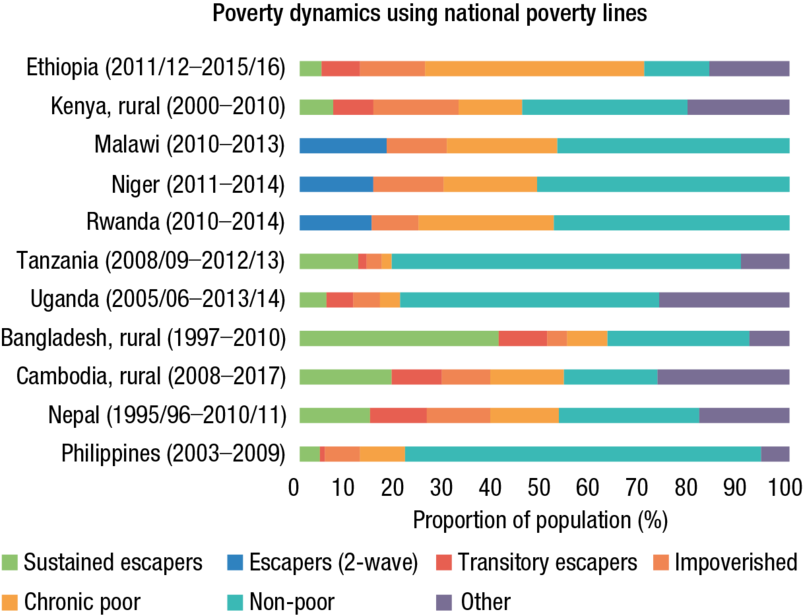When risk and uncertainty affects the wealthy, the welfare of vulnerable people may be neglected. Recent suggestions by health agencies that people should stay at home if they’re feeling unwell or begin to stockpile food in response to the coronavirus outbreak may be well-intentioned guidance, but it may also fail to take into account the most vulnerable groups of society.
Guidance to date is of limited use to people without adequate safety nets. Workers in the informal economy may not have the luxury of staying at home without paid sick leave. People living in or near poverty often lack disposable cash and cannot easily stockpile food. Hunger, malnutrition, pneumonia and other forms of health-related shocks and stresses compound vulnerability to the virus and contribute to a vicious cycle of disease, destitution and death. Poverty can fuel contagion, but contagion can also create or deepen impoverishment.
The virus will be another source of impoverishment and reinforce existing factors, in turn limiting the ability of vulnerable households to escape from – and stay out of – poverty.
Ill-health and limited resilience capacities can create multiplier effects. One study of 11 countries in sub-Saharan Africa and South and Southeast Asia found that in the absence of health insurance or other forms of universal health coverage, responses to health shocks by people in poverty or near the poverty line commonly included distress sales of assets and taking out loans from informal moneylenders, sometimes at exploitative rates.
Reaching the furthest behind
We are at a crossroads: coronavirus has not yet reached (or at least we don’t know if it has reached) epidemic proportions in developing countries. There is therefore an opportunity to pre-empt the worst of its effects through concerted action to reach the furthest behind.
The World Bank’s announcement of $12 billion in immediate support is promising. Through the package, which will be prioritised for the poorest countries and those at high risk but with low capacity, the Bank will offer support for a range of interventions aimed at strengthening healthcare systems.
To be sure, healthcare systems need strengthening, as do referral systems. Donors could also support the World Health Organisation to develop country-level preparedness plans under the World Bank initiative. Concurrently, the Bank could consider moving beyond national systems to prioritise interventions in hard-to-reach areas. Many of these locations within countries may be remote, with health facilities and other services beyond the reach of people in poverty.
Urban slums are hotspots for the spread of disease, and so targeting these areas of extreme poverty through health interventions alongside other forms of sustainable development would offer a longer-term solution to preventing the spread of future outbreaks and reducing impoverishment.
Countries with viable social protection systems may be able to extend them temporarily to take account of this new threat. Where systems do not exist, this is an opportunity to develop them. Finally, limited safety nets in low-income countries reinforce the need for decent employment standards to offer protection for the most vulnerable workers. Measures targeted at informal workers can be effective in increasing the number of women and men able to sustain escapes from poverty.
All of this points to a critical need to situate the response to the coronavirus within wider risk-informed development strategies, to ensure the inclusion of those furthest behind, who may otherwise face the worst effects of the pandemic in the months ahead.

